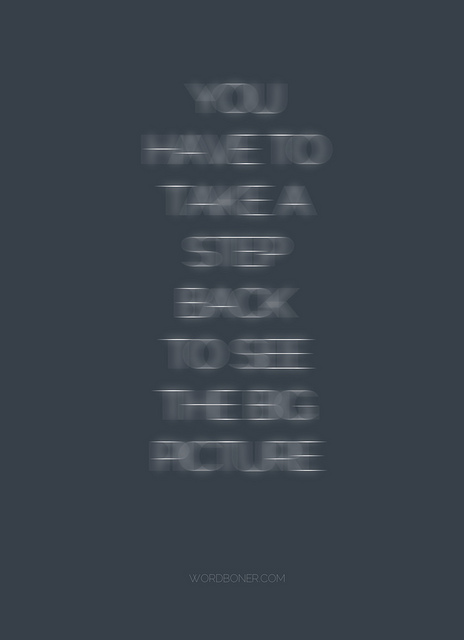How did Einstein discover the theory of relativity? How did Newton uncover the reality of gravity? How did Marie Curie pioneer research on radioactivity?
All of them engaged in the art of problem-solving, eventually finding answers to the difficult problems they were facing.
Problem-solving may be one of the most important skills to have in the 21st century. If we break it down, problem-solving is simply a process for making small decisions that hopefully result in a solution to a complex problem. The process is fluid, messy, and takes time, but it is ever-present in our day to day lives.
Everyone has their own method when it comes to problem-solving, but there are some approaches that are much more powerful than others.
One of these, and probably my favorite approach, is the Zoom Method.
The Zoom Method
The Zoom Method is the process of shifting perspectives for how you view any given problem. It comprises of two steps: zoom out and then zoom in. There is value found in both, the big picture and the finer details, and this method helps you extract each.
It starts with zooming out. Have you ever gotten caught up in the smallest of details? Focusing on the minutiae before truly grasping the extent of the problem you’re facing? If we don’t deliberately make the effort to zoom out, this is where we often get stuck. We walk among the trees when we should really be looking at the entire forest.
So the first step is to zoom out of the problem you’re facing and look at the bigger picture. What are you dealing with? How does it fit into the larger scheme of things? Who else is involved in the scope? Get a sense for what you’re working with and how it exists in relation to everything else. Doing so, helps you get a better sense of the problem itself, but also gives you a deeper understanding of how to approach finding a solution. It can help you discover patterns, find first principles, and map the entire territory of the problem before you take action.
Doing so, helps you get a better sense of the problem itself, but also gives you a deeper understanding of how to approach finding a solution. It can help you discover patterns, find first principles, and map the entire territory of the problem before you take action.
This step of zooming out can be done in a number of ways. It could be as simple as zooming out to see the problem in terms of a larger industry perhaps. On the other hand, you could zoom out historically, and understand the problem through time rather than space.
How you zoom out depends on the situation, but zooming out is essential. It also comes with its challenges. We can easily get caught up in our grand vision and not understand how we can actually get the problem solved. When you’re more worried about the why, rather than the how, it’s probably time to zoom back in.
After you get a handle on things, then you can start to gradually zoom in and understand the details of things. With the bigger picture in hand, the smaller pieces start to make more sense. You begin to see how they fit together and work with one another. Solutions start to appear that were previously invisible.
And it’s not just a one-time thing. We should be zooming constantly, as we get stuck and hit roadblocks. Zooming can help us change how we’re thinking of a solution at any step of the problem-solving process. Use it early and often.
This is where the value of zooming is found. It helps you grasp the problem you’re facing, both from up close and far away, from this direction and that. And having this multitude of perspectives is what makes all the difference.
If I had an hour to solve a problem, I’d spend 55 minutes thinking about the problem and 5 minutes thinking about solutions.Albert Einstein
Ultimately, the value of the Zoom Method is that it forces us to think more deeply about the problems we face. Far too often we’re ready to jump in and solve problems without really understanding them. While the enthusiasm is a great thing, it also sets you up for failure.
Taking the time to think through a problem, to dissect and interpret it, is where our ability to problem solve comes from.
Understanding the problem is the first and most important step for problem-solving. The Zoom Method ensures that you take the time to uncover that understanding, before you act.
